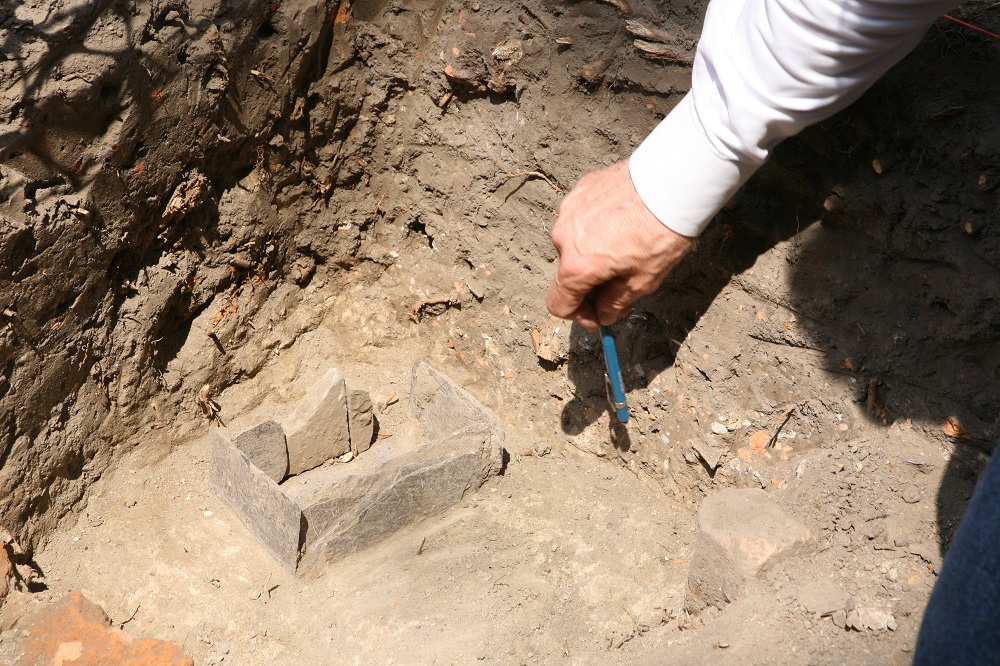William & Mary's Colonial-era Foundations Add to College's Mystery

This Research in Action article was provided to LiveScience in partnership with the National Science Foundation.
Newly unearthed foundations and a mysterious box discovered at the College of William & Mary, in Williamsburg, Virginia, date to the Colonial period and may be associated with enslaved 18th century staff.
The newly uncovered foundations, located immediately south of William & Mary's landmark Christopher Wren Building, are nowhere to be found on any of the historic documents showing the layout of Williamsburg in the 18th century, including the "Frenchman's Map" used to guide the restoration of Colonial Williamsburg.
The newly uncovered brick foundations rested for centuries, unknown and undisturbed under a foot and a half of dirt, until researchers excavated some test units in July. Archaeologists say the foundations are likely a bit more recent than the Wren Building, which was constructed between 1695 and 1700.
The test units revealed that the building that once stood there was 20 feet, 4 inches long and more than 16 feet wide — a fairly massive structure for Colonial builders.
The kind of mortar used between the bricks and other clues led scholars to estimate that the building dates to the second quarter of the 18th century. The building almost certainly was the home of slaves or a workplace staffed by slaves. The building may have been a kitchen, lodging for slaves or a laundry room.
Only a small portion of the foundations was exposed and the holes have been backfilled as the college plans a full-scale excavation of the site, which one scientist rated "a solid 10" in terms of archaeological potential. A complete excavation is necessary to get to the artifact-rich areas inside and below the foundation walls.
Sign up for the Live Science daily newsletter now
Get the world’s most fascinating discoveries delivered straight to your inbox.
And the "mystery box?" It's a six by four-inch rectangular slate box found buried outside one of the foundations — it was empty, except for miscellaneous fill. Archaeologists consider it a minor mystery, but one that still makes them scratch their heads.
"It could have been a crypt for a kid's pet mouse," one suggested.
Any opinions, findings, and conclusions or recommendations expressed in this material are those of the author and do not necessarily reflect the views of the National Science Foundation. See the Research in Action archive.











